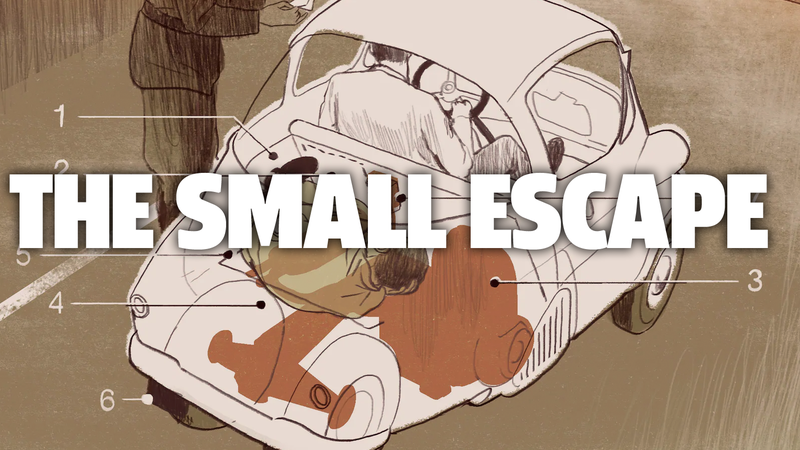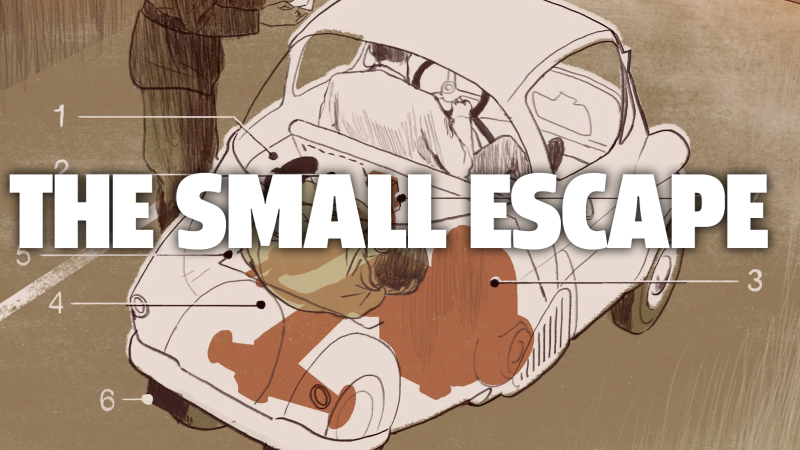
This month, 30 years ago, the Berlin Wall finally came down, and Germany began the process of re-unification. Before that, though, Berlin (and Germany) was split, with East Berlin transformed into a police state dedicated to building as many large, slab concrete buildings as possible. Many, many people longed to escape to better lives, and apartments. BMW decided to commemorate the anniversary of the Wall coming down by telling the amazing story of how nine people were smuggled out of East Germany in one of the most improbable human-smuggling cars ever: a BMW Isetta.
Now, I know this is corporate content, and we don’t really want to just shill and amplify straight-up advertising, but this is unusually well done and, significantly, BMW (unfortunately) no longer even sells Isettas anymore. I checked.
Advertisement
The story starts in November of 1962, when Manfred Koster was drafted into the East German National People’s Army. Koster, both a pacifist and generally not pleased with the overall direction of East Germany, decided he had to escape to the west. But how?

Koster remembered his old friend Klaus-Günter Jacobi, who was living on the other side of the wall in West Berlin. Koster was able to go visit Jacobi for one night, during which they came up with the plan to use Jacobi’s tiny Isetta to smuggle Koster across the border for good.
The reason the Isetta plan was so good was precisely because it was so terrible. While larger cars were inspected at border crossings with intense scrutiny, a car as tiny as the gumdrop-shaped Isetta would not get nearly the same level of searching because, come on, it’s an Isetta—where the hell are you going to hide anyone?
Advertisement
For most people, smuggling a person in an Isetta would be seen as absurd. But not Jacobi. A trained mechanic and a “avid motorist and a very talented hobbyist,” as a Berlin historic center notes, Jacobi had a good understanding of the inner workings and structure of the little one-cylinder car, and he had access to a garage and tools via his job as a driving instructor.
Just to get a sense of the challenges involved here, let’s look at the interior layout of an Isetta:

Advertisement
As you can see, an Isetta is mid-engined, with the small 300cc one-banger taking up most of the area to the right side of the car, behind the seat and in front of the close-set rear wheels. To the left of the engine was the 3.5 gallon fuel tank, a spare tire, and above the engine was a small luggage shelf/well. It’s pretty tight in there as it is, and looking in this volume and imagining where the hell to cram an adult human takes some real skill.
Jacobi started by raising the luggage shelf about four inches, then removing the spare tire, air cleaner, exhaust pipe heat shield, and the gas tank. An access hole was cut into the rear seat panel/firewall, the exhaust manifold re-bent and re-located, and a floor, designed to shield the smuggled person from the exhaust heat, was welded in.
Advertisement
Instead of the normal gas tank, the Isetta would have to cross the border with a tiny two-quart gas tank—really, more of a gas flask.
The end result looked like this:

Advertisement
Holy krauts, that’s amazing. With the 5’7″ Koster in a fetal position, head resting right over the Isetta’s gearbox and a measly two quarts of fuel in a tiny can over his head, this crazy plan could actually work.
Just a week before Koster was to report to the Army, in May of 1963, two students volunteered to help, one driving the Isetta across the border with Koster, one following in a Volkswagen Beetle to provide any needed support.
Advertisement
And support was indeed needed, as culture center Robert Tillmanns Haus notes in a biography of Jacobi, reported in a project on life in the shadow of the Wall:
An additional problem was the fact that Mr. Jacobi could not participate as a West Berliners themselves in the escape project (for West Berliners, the east of the city was then locked). A student who was originally driving was suddenly frightened and backtracked. But fortunately, there were two more students ready to take on this dangerous task. While one of the escape helpers drove the Isetta, the other followed as a companion inconspicuously in a VW “Beetle”. In Buchholz Manfred Koster was taken and replaced the gas tank.
And then the project almost burst: Unexpectedly a farmer appeared, there was a cloudburst … and a cable broke in the Isetta. She did not drive anymore! Thus, the escort car had to tow her away. Nevertheless, the team came through the border control without major problems. Klaus Jacobi was already waiting on the other side. It would then take another five minutes before Mr. Koster was released from hiding.
Advertisement
That kind of undersells how the border crossing went. It was an ordeal of waiting in line, guards peeking in the engine compartment. It reads as terrifying to me, with unbearable tension. But, incredibly after three hours crammed in that miserable, hot, noisy little prison, Koster was free.
BMW made a nice little short film dramatizing the event:
Eventually, the Isetta was used to smuggle nine other people over the border, and the little car is remembered (via a replica) in the Wall Museum in Berlin.
Advertisement

It’s an amazing story of resourcefulness and inspiration, driven by desperation. Plus, it’s a good reminder of what a remarkable little car the Isetta was, the humble little Italian-designed gumdrop with a refrigerator door that is largely responsible for why BMW exists today.
Advertisement
Also, BMW claims it’s the best-selling single-cylinder car of all time, which I was not aware of until now. How about that?













